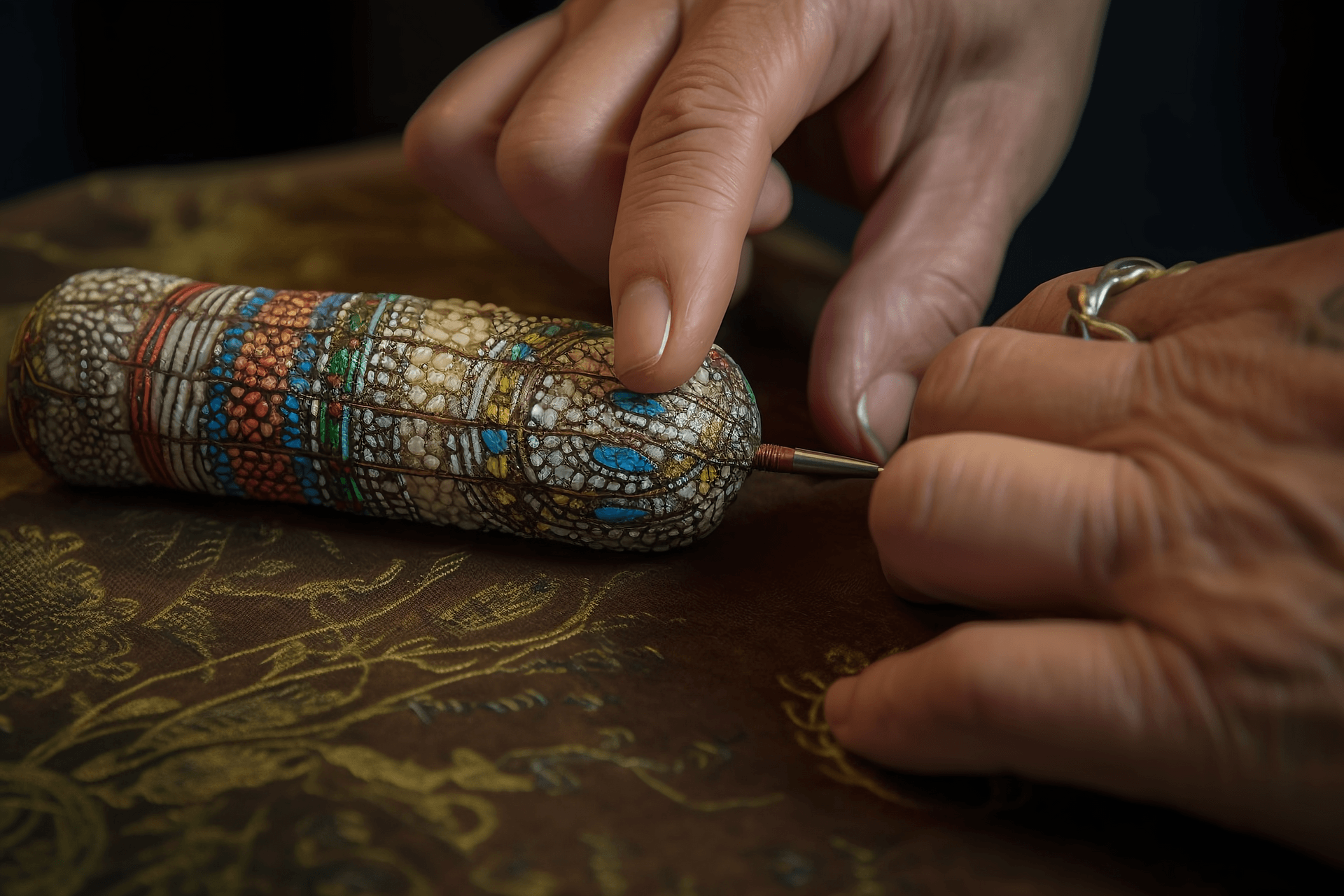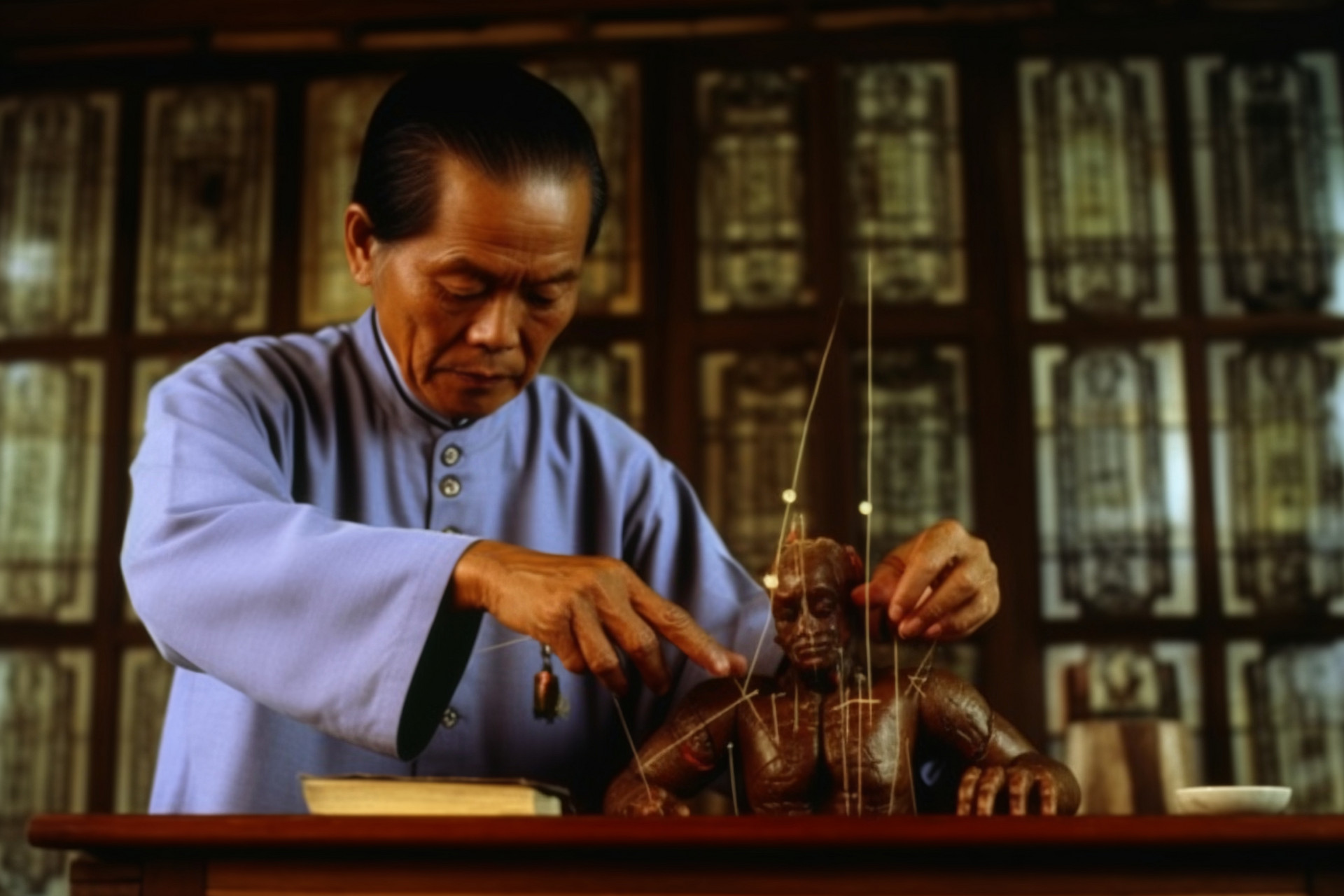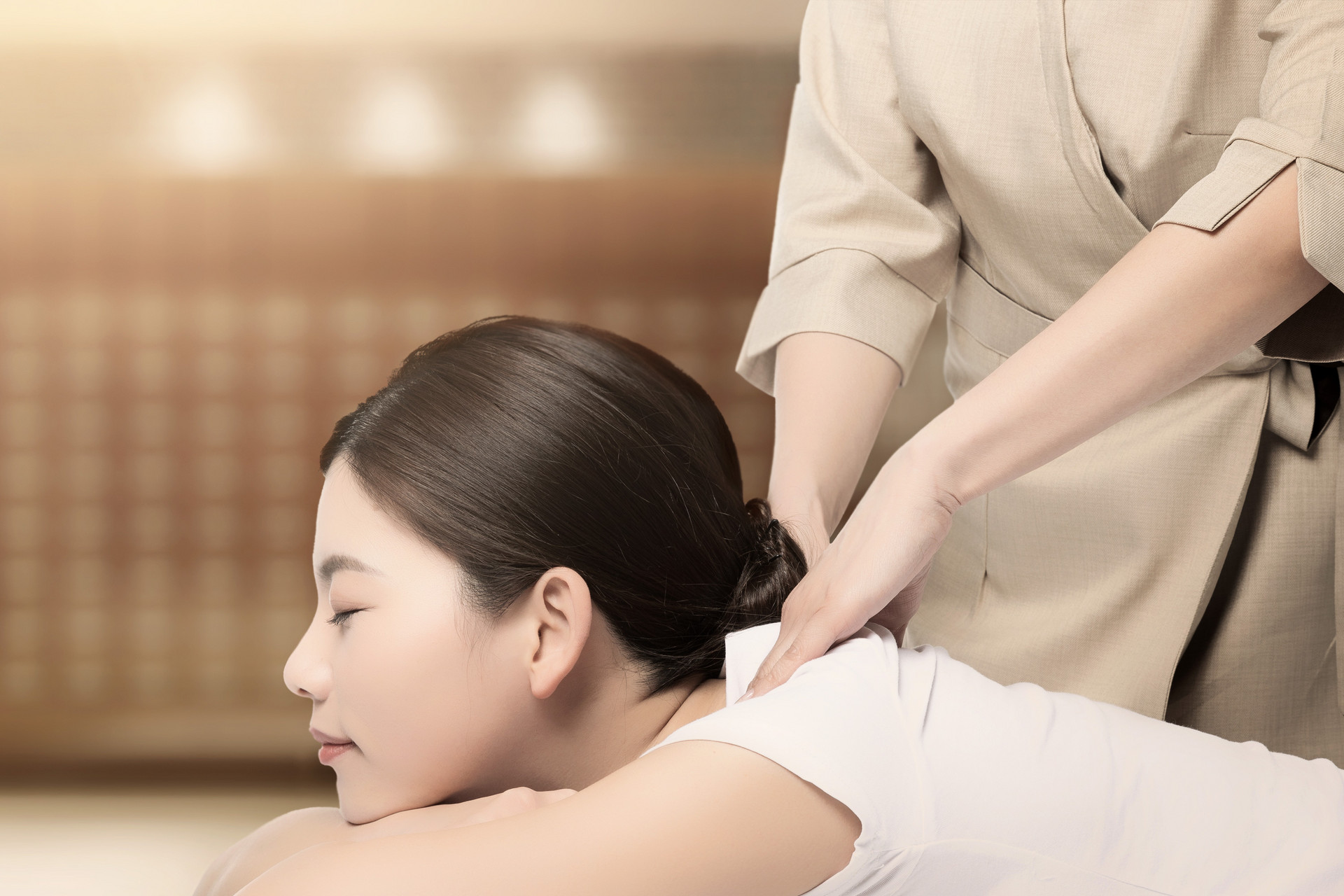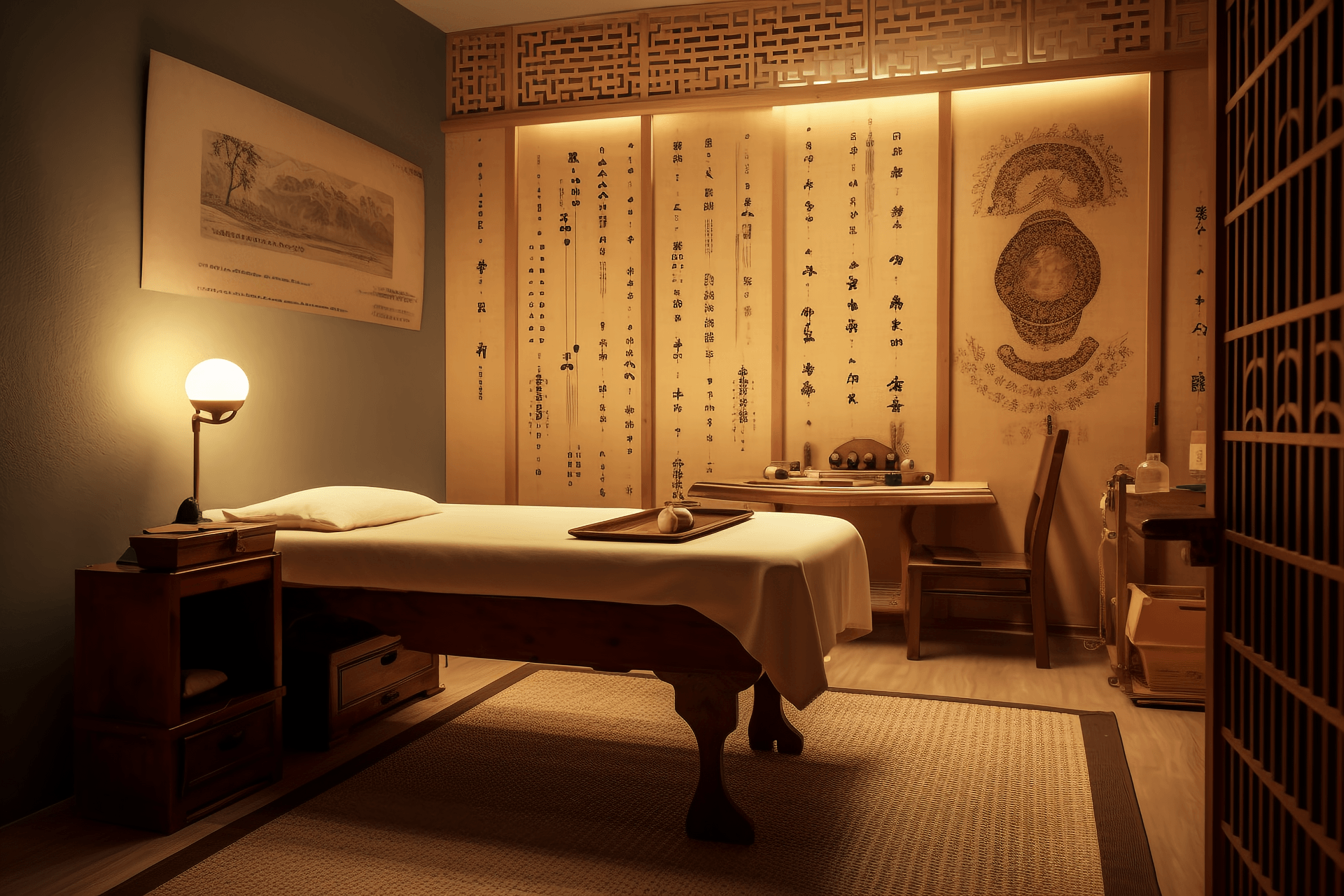A thick needle, also known as a giant needle, evolved from the "Nine Needles" in the Huangdi Neijing. It is named so because of its thick body. The needle sensation during thick needle treatment is strong, the needling time is short, and the needle is not easily bent, with very few instances of needle stagnation or breakage. Therefore, the thick needle therapy is suitable for conditions that require strong stimulation or bloodletting.
[Operational Method]
1. Needle Tools
The structure of the thick needle is the same as the fine needle, consisting of a needle tip, needle body, needle root, needle handle, and needle tail. However, the specifications and thickness of the thick needle are different from the fine needle. The diameter of the thick needle ranges from 0.4mm, 0.6mm, 0.7mm, 0.8mm, to 1.2mm, with lengths ranging from 10cm to 33cm. The needle tip of the thick needle should be round but not blunt, sharp but not too sharp. If it is too round, it will be blunt and difficult to insert, causing discomfort to the patient; if it is too sharp, the needle tip is prone to curling.
2. Operation
1. Inserting the Needle
(1) Clamp and Insert Method: Hold the lower end of the needle body with the thumb and index finger of the hand, exposing 4-5 minutes of the needle tip, align it with the acupoint, and quickly insert it. This method is suitable for areas with thick muscles.
(2) Clamp and Press Insert Method: Hold the needle body with the thumb and middle finger of the hand, and press the needle tail with the index finger, then quickly insert it. This method is suitable for the back.
(3) Twist and Insert Method: Hold the needle body with the pressing hand, hold the needle handle with the needling hand, and twist and press down simultaneously to insert it. This method is suitable for the soft skin of the abdomen.
2. Techniques
After inserting the thick needle, there is generally a strong sensation. If strong stimulation is needed, the needle can be twisted and lifted 6-7 times. The best effect is when there is a discharge sensation after needling, but excessive twisting and lifting should be avoided for children. For patients with muscle atrophy, the rolling muscle technique can be used. After the needle is inserted, twist it in one direction until it cannot be turned. At this time, the muscle fibers have wrapped around the needle body, and then lift it up and down several times. Lifting it up and down 2-3 times provides moderate stimulation, and leaving the needle without lifting provides weak stimulation.
3. Withdrawing the Needle
Once the purpose of needling is achieved, the needle can be withdrawn. When withdrawing the needle, press and rub the needle hole with a dry alcohol cotton ball to prevent bleeding. For patients with excess heat syndrome, pressing is unnecessary, and it is better to let out a small amount of blood.
4. Principles of Needling
Due to the thick body of the thick needle and its strong stimulation, flexible needling methods should be adopted based on the patient's constitution, condition, and location. For areas with well-developed muscles, deep needling is suitable, such as the buttocks. For areas with shallow muscles and important internal organs, such as the head, neck, back, chest, and abdomen, shallow needling or superficial needling along the skin is appropriate. For various types of paralysis, acute diseases, strong stimulation without leaving the needle is suitable. For chronic diseases, leaving the needle without increasing the stimulation is recommended. For people with delayed nerve response, strong stimulation is suitable; for those with sensitive nerves, weak stimulation is recommended, and quick insertion and withdrawal of the needle is sufficient.
5. Retaining the Needle
For the back Shu points, the needle is generally retained for 1-2 hours, while for some diseases, the needle can be retained for 3-4 hours or longer. Strong stimulation without leaving the needle is appropriate for other conditions.
6. Treatment Course
Needling is performed once a day, with 10 treatments constituting one course of treatment, followed by a 3-day rest period.
[Indications]
1. Herpes zoster, neural dermatitis, polyneuritis, erysipelas, eczema
Treated with thick needle therapy. For herpes zoster, the needle is inserted at the blocking point until it reaches the meridian or until the meridian is unblocked; for neural dermatitis, erysipelas, and eczema, the needle is inserted at the Red Doctor point, chest point; for polyneuritis, the needle is inserted at the blocking point until it reaches the yang meridian, the Gate of Life point, Zhongfu point, Hand Sanli point, Hegu point, Huantiao point, Zusanli point, and Juegu point.
2. Peripheral facial paralysis, intercostal neuralgia, sciatica, fatigue-related lumbar-sacral joint injury, lumbar disc herniation, piriformis syndrome
Treated with thick needle therapy. For peripheral facial paralysis, the needle is inserted at the Yingfeng point, the Chequ point, the Taiyang point, and the Xiaguan point; for intercostal neuralgia, the needle is inserted along the spine until the yang point; for lumbar and leg diseases, the needle is inserted at the waist point, sacrum point, and Huantiao point.
3. Stroke hemiplegia, paralysis
Treated with thick needle therapy. For stroke, the needle is inserted at the Jianyu point, Quchi point, Huantiao point, and Yanglingquan point; for paralysis, the needle is inserted at the Dazhui point until it reaches the affected spine. If one needle cannot reach the position, it can be divided into segments and inserted with 2-3 needles. For upper limb deltoid muscle paralysis, the needle is inserted at the Jianyu point to the infraspinatus muscle; for wrist droop, the needle is inserted at the Quchi point to the radial side; for finger flexion, the needle is inserted at the Hegu point to the Laogong point. For lower limb hip flexor paralysis, the needle is inserted at the Wushi point to the Yinquan point; for hip extensor paralysis, the needle is inserted at the Zhichuan point to the Huantiao point; for thigh adductor paralysis, the needle is inserted at the Xuehai point to the Biqiu point; for thigh abductor paralysis, the needle is inserted at the Yangguan point to the Fengshi point; for knee extensor paralysis, the needle is inserted at the Heding point to the Futu point; for knee flexor paralysis, the needle is inserted at the Weizhong point to the Yinquan point; for foot droop, the needle is inserted at the Zusanli point to the Xiajuxu point; for toe extension paralysis, the needle is inserted at the Weizhong point to the Chengshan point; for toe flexion paralysis, the needle is inserted at the Yanglingquan point to the Juegu point; for foot inversion, the needle is inserted at the Yanglingquan point to the Jiaoxin point.
[Precautions]
1. Familiarity with Anatomy
The thick needle is different from the fine needle, and it causes more tissue damage. Therefore, it is necessary to grasp the morphology and structure of various parts of the body and have a good understanding of anatomy to avoid accidents.
2. Strict Disinfection
The thick needle requires a larger area of skin and tissue damage during insertion. If disinfection is not thorough, it is easy to cause infection and have adverse consequences. In addition to ensuring the disinfection of the patient's skin and needle tools, disinfection of the doctor's fingers is also important.
3. Avoiding Injury to Major Arteries and Veins
Avoid inserting the needle at locations where major veins and arteries are exposed or.
| 1 2 > >> >>|











